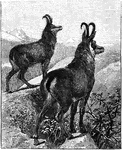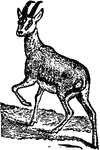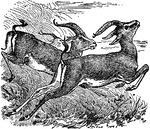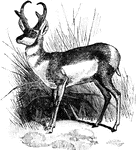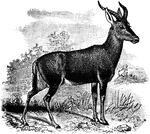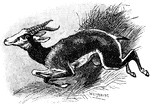Clipart tagged: ‘antelope’
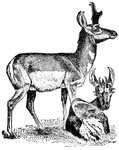
Antelope
A group of herbivorous African animals of the family Bovidae, distinguished by a pair of hollow horns…

Antelope Head
"Head of antelope (Gazella granti), showing horns." —The Encyclopedia Britannica, 1903
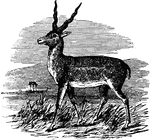
Sasin Antelope
the common Indian antelope remarkable for its swiftness and beauty. It is abundant in the open dry plains…
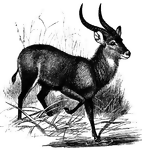
Kobus Sing-Sing Antelope
"A West-African kob antelope, Kobus sing-sing. —Whitney, 1889 This illustration shows the antelope…
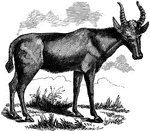
Bubula
"Is of a reddish-fawn color, with black horns, shaped like the tines of a fork. "— S. G. Goodrich,…
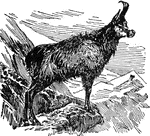
Chamois
"Chamois is a well-known species of the antelope found only in high, mountainous regions, where they…
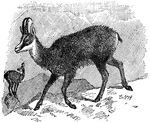
Chamois
Its size is about that of a well grown goat., and it is so agile that it can clear at a bound crevices…
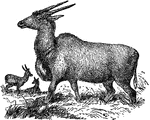
Eland
The common eland (Taurotragus oryx, also known as the southern eland) is a savannah and plains antelope…
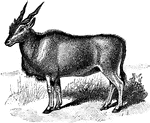
Common Eland
The Common Eland (Taurotragus oryx) is a plains antelope in the Bovidae family of cloven-hoofed mammals.
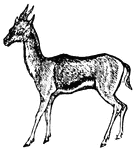
Gazelle
Most gazelle are found in Africa. Some inhabit SW Asia and N. Africa. They are graceful and swift runners…

Head of Gems'bok
This illustration shows a head of a Gems'bok. A Gems'bok (Oryx Gazella) is a species of South African…
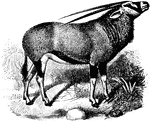
Gemsbok
The Gemsbok (Oryx gazella) is a large antelope in the Bovidae family of cloven-hoofed mammals. It was…
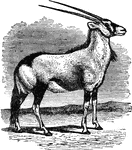
Gemsbok
"A species of antelope, abounding on the dry yet fertile plains of South Africa, where it feeds on the…
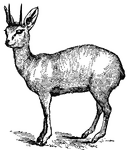
Klipspringer
The Klipspringer, or Kainsi, is a small but very active antelope (Oreotragus saltator), found in the…
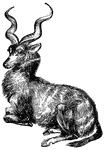
Kudu
A native of S. Africa and similar in appearance to the antelope. The male's horns are nearly five feet…
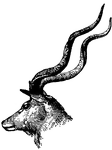
Head of Kudu
This illustration shows the head of a kudu. A kudu is a large African antelope related to the eland,…
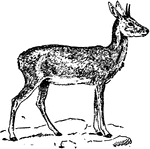
Steinbok
"A small (under two feet) South and East African antelope, in which the horns of the male rarely exceed…






